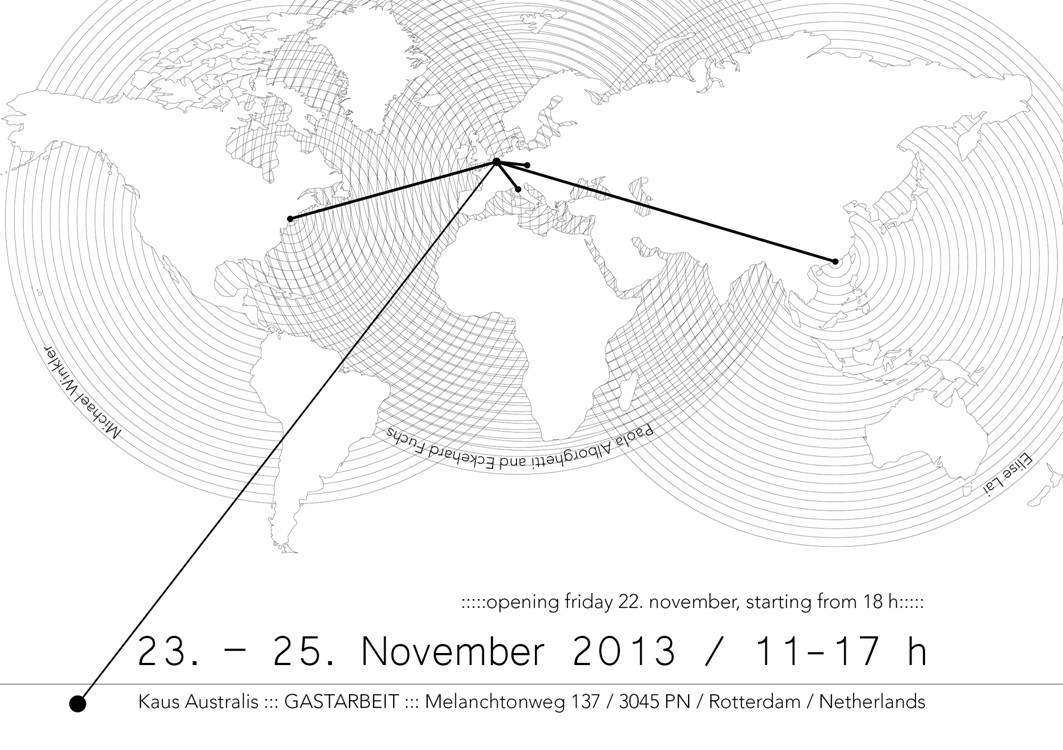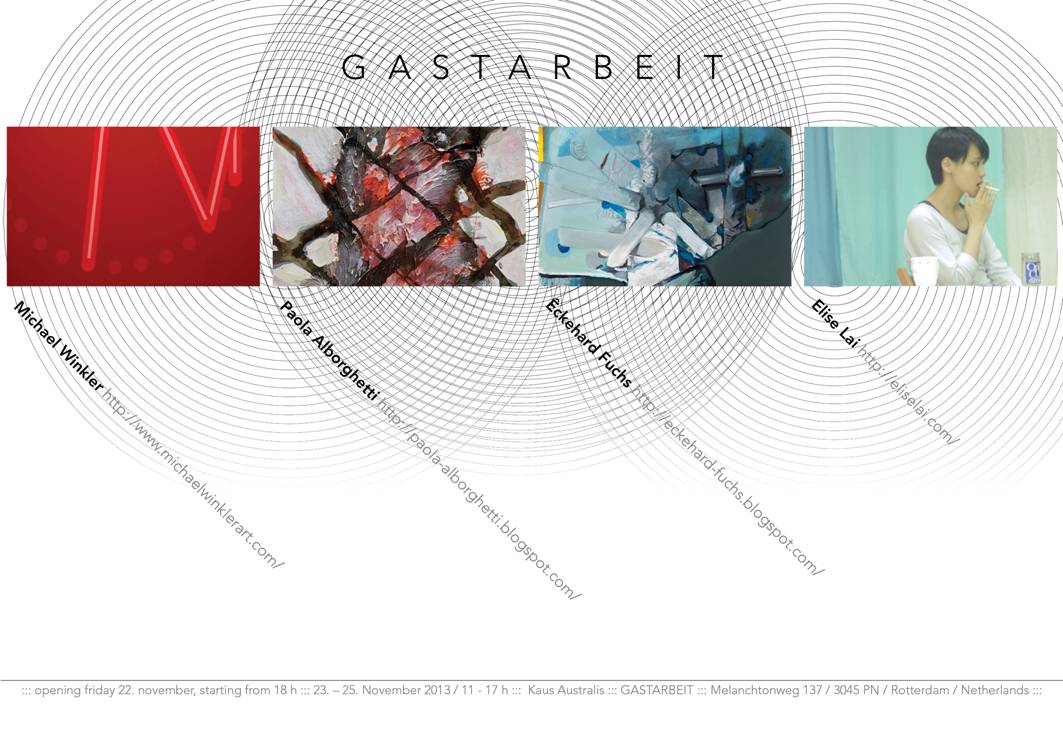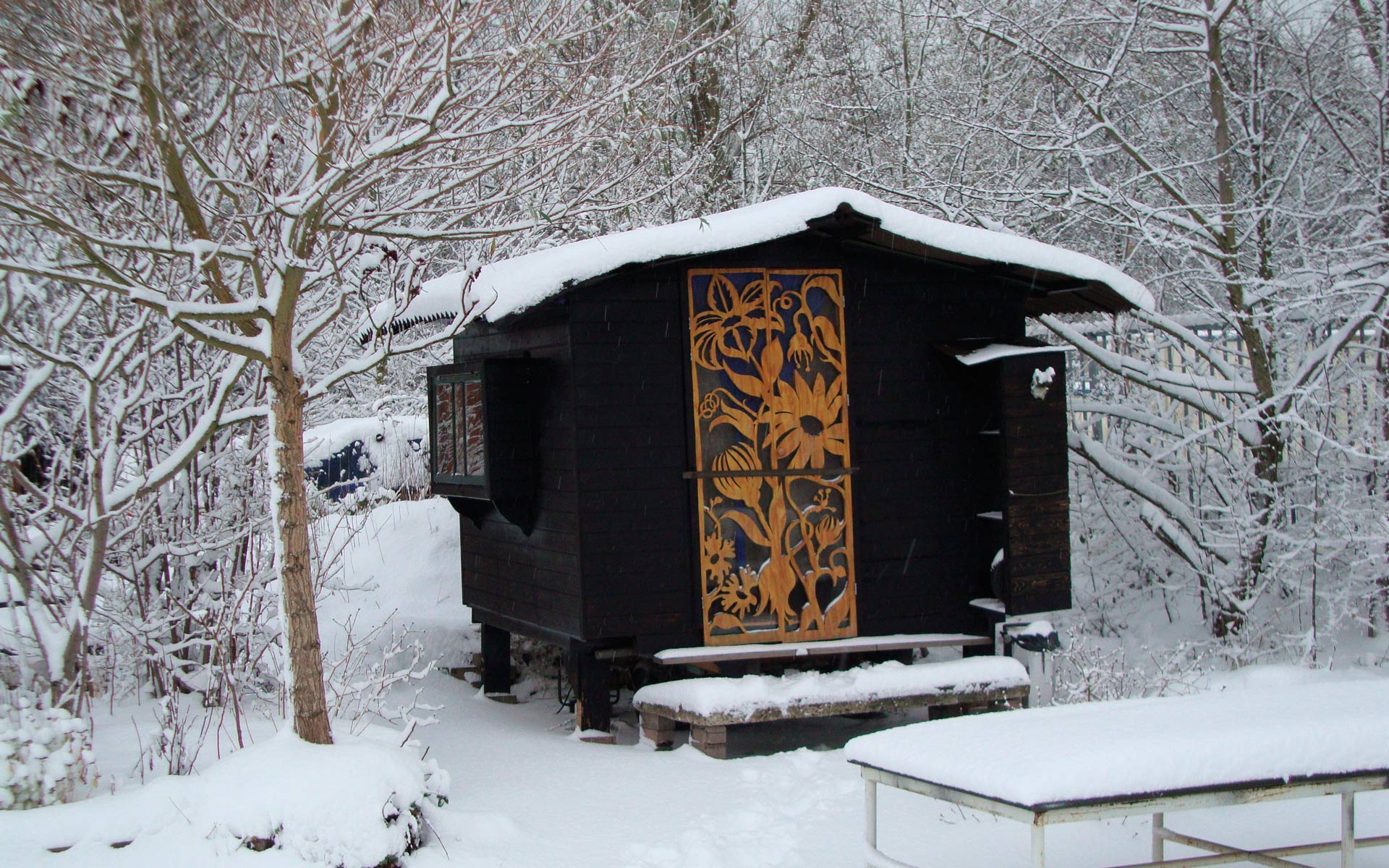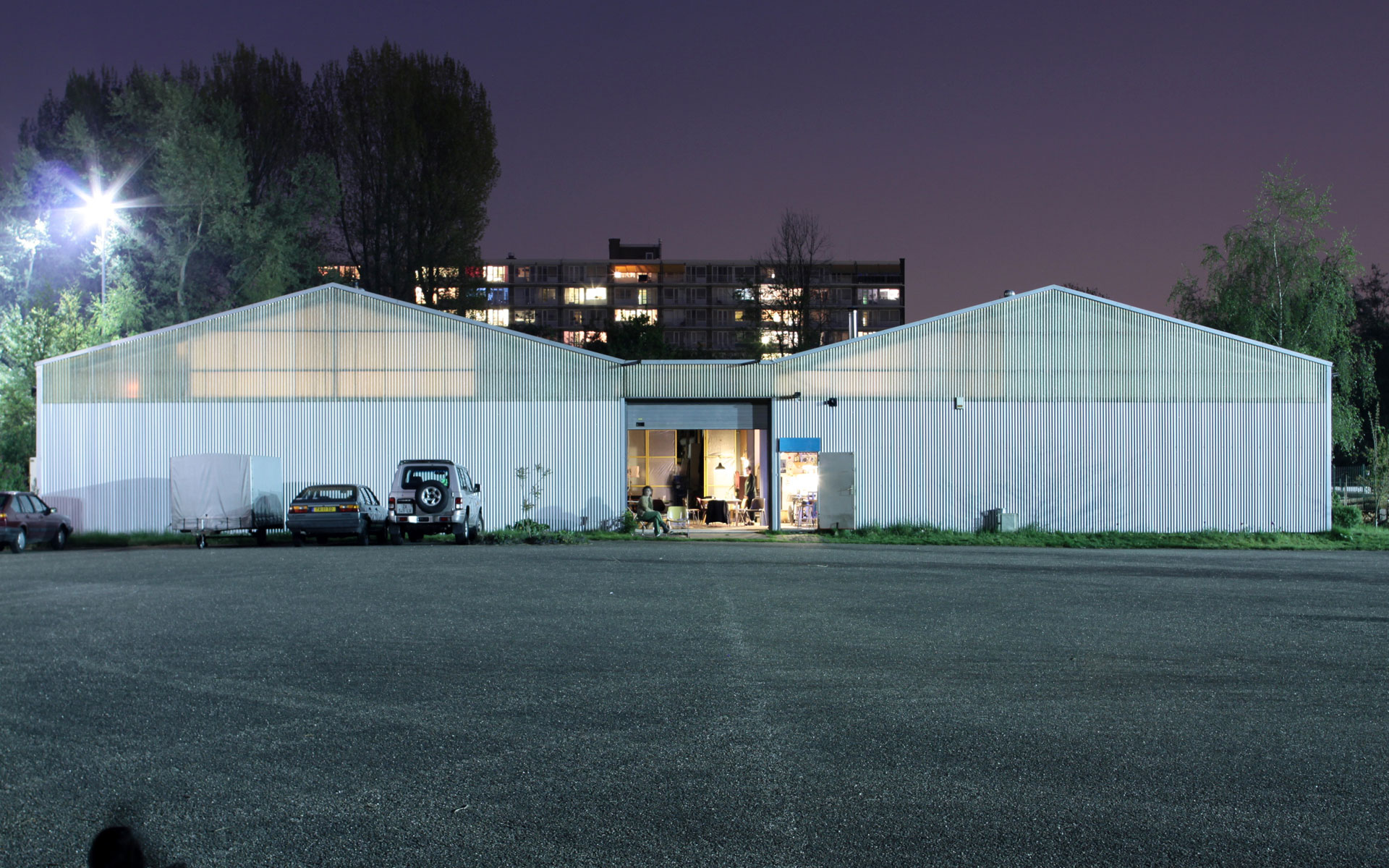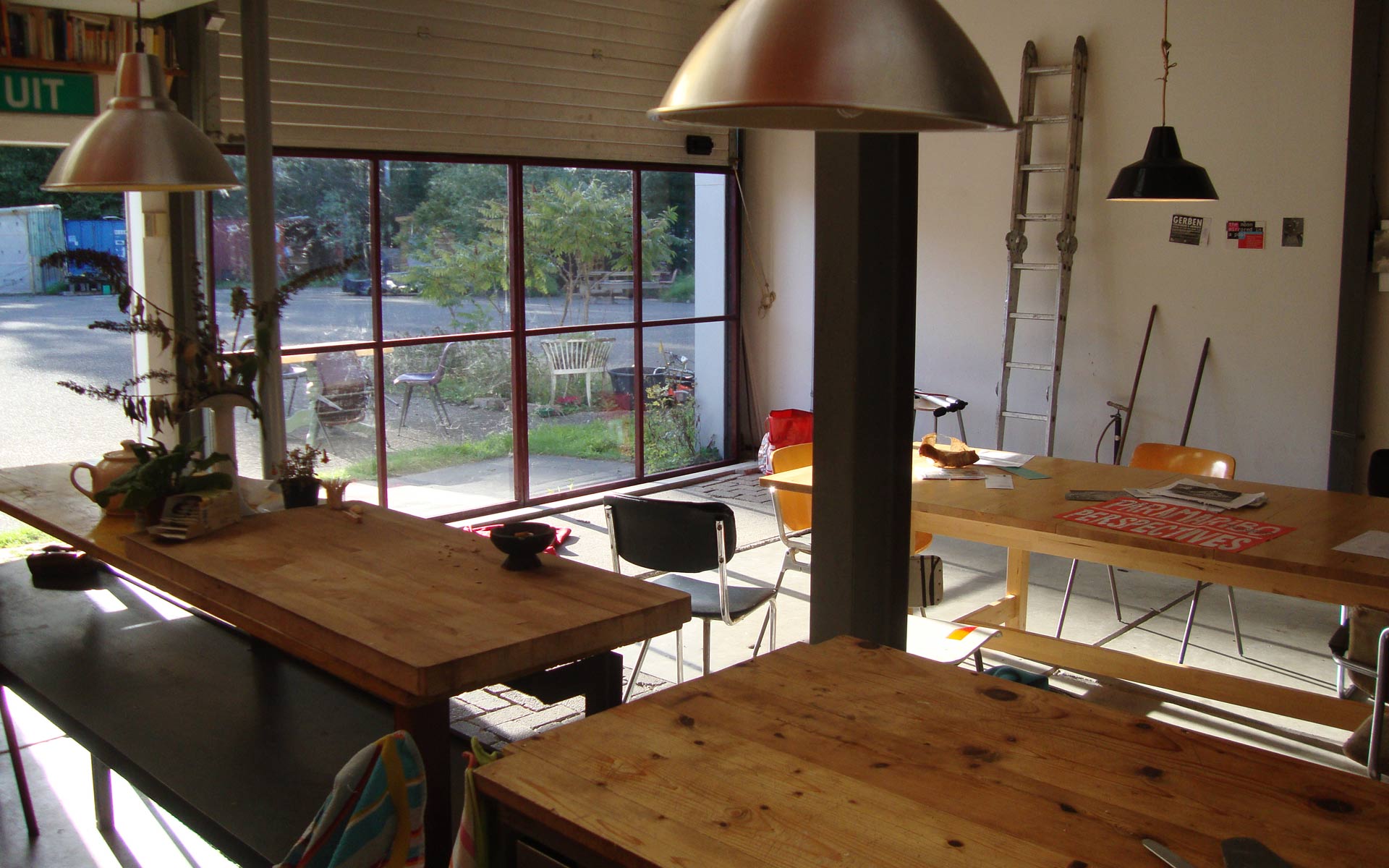Michael Winkler: FORMS OF LANGUAGE – process-based paintings of abstract forms map the choices made by our cultural ancestors when they created the spelling of our words.
The paintings are created using a rigorous process which enables the spelling of words to be treated as instructions for generating abstract forms – choices of spelling made by our ancestors when they created the signs for our words plot the drawing of the forms. Since the spelling of English words was not devised according to a plan, it constitutes a collective set of innately driven choices made in the context of a desire to express senses of meaning.
Paola Alborghetti: I define my work as the unwitting source of wonderful accidents. The process of creation is starting from what nature and humans bring in a citation, like tracks, signs, footprints. From them I make my paintings.
I like to move „inside the materials“, the forms, find new ones, cancel things, print drawings, cover them, print new again. The subject of my paintings is the process itself, everything else is a pretext, a piece of memory.
In all, there is a trace, a sign left.
Trace is a genuine element, silent, like the spontaneity and imagination.
In my work I keep myself continually making “real/active” work while always discovering something new under the structures – again putting something away, placing new lines, imagining figures or maybe only shadows, letters, elements connected to the human presence.
Representation in my pictures takes place where the wonder is starting and where the imagination has a large space. That means for me, a big opportunity to express the fascination of the „unknown“, instilling an excitement to step further.
www.paola-alborghetti.blogspot.com
Eckehard Fuchs’s subjects hover between memory, imagination and the impressions left on our subconscious. Drawing from the aesthetic of Roman and Gothic sculpture, Italian Renaissance and German Expressionism, he creates visual tales populated with characters portraying the human condition of longing, isolation, suffering and despair. At times, combining a subtle palette with expressive, garish colors, his paintings merely describe a de facto reality, but rather navigate the viewer through a psychological landscape enabling a glimpse through the window of the soul.
www.eckehard-fuchs.blogspot.com
Elise Lai: My works are always about a kind of living mode. In a general sense, they’re about touches, intimacies and trivia in the everyday banal routine of personal habits and mundane chores. I’m interested in the residues of everyday life, always wondering about what is left behind after these experiences have taken place—the emotional and physical changes to the perceived environment, the feelings which remain, and the material effects like the lingering smells, etc. I’m fascinated by what these residues can be, what they can evoke. As an artist and a human being who is interested in such things, my approach to life and my creation of art are arranged accordingly.
Michael Winkler: FORMS OF LANGUAGE – process-based paintings of abstract forms map the choices made by our cultural ancestors when they created the spelling of our words.
The paintings are created using a rigorous process which enables the spelling of words to be treated as instructions for generating abstract forms – choices of spelling made by our ancestors when they created the signs for our words plot the drawing of the forms. Since the spelling of English words was not devised according to a plan, it constitutes a collective set of innately driven choices made in the context of a desire to express senses of meaning.
Paola Alborghetti: I define my work as the unwitting source of wonderful accidents. The process of creation is starting from what nature and humans bring in a citation, like tracks, signs, footprints. From them I make my paintings.
I like to move „inside the materials“, the forms, find new ones, cancel things, print drawings, cover them, print new again. The subject of my paintings is the process itself, everything else is a pretext, a piece of memory.
In all, there is a trace, a sign left.
Trace is a genuine element, silent, like the spontaneity and imagination.
In my work I keep myself continually making “real/active” work while always discovering something new under the structures – again putting something away, placing new lines, imagining figures or maybe only shadows, letters, elements connected to the human presence.
Representation in my pictures takes place where the wonder is starting and where the imagination has a large space. That means for me, a big opportunity to express the fascination of the „unknown“, instilling an excitement to step further.
www.paola-alborghetti.blogspot.com
Eckehard Fuchs’s subjects hover between memory, imagination and the impressions left on our subconscious. Drawing from the aesthetic of Roman and Gothic sculpture, Italian Renaissance and German Expressionism, he creates visual tales populated with characters portraying the human condition of longing, isolation, suffering and despair. At times, combining a subtle palette with expressive, garish colors, his paintings merely describe a de facto reality, but rather navigate the viewer through a psychological landscape enabling a glimpse through the window of the soul.
www.eckehard-fuchs.blogspot.com
Elise Lai: My works are always about a kind of living mode. In a general sense, they’re about touches, intimacies and trivia in the everyday banal routine of personal habits and mundane chores. I’m interested in the residues of everyday life, always wondering about what is left behind after these experiences have taken place—the emotional and physical changes to the perceived environment, the feelings which remain, and the material effects like the lingering smells, etc. I’m fascinated by what these residues can be, what they can evoke. As an artist and a human being who is interested in such things, my approach to life and my creation of art are arranged accordingly.


